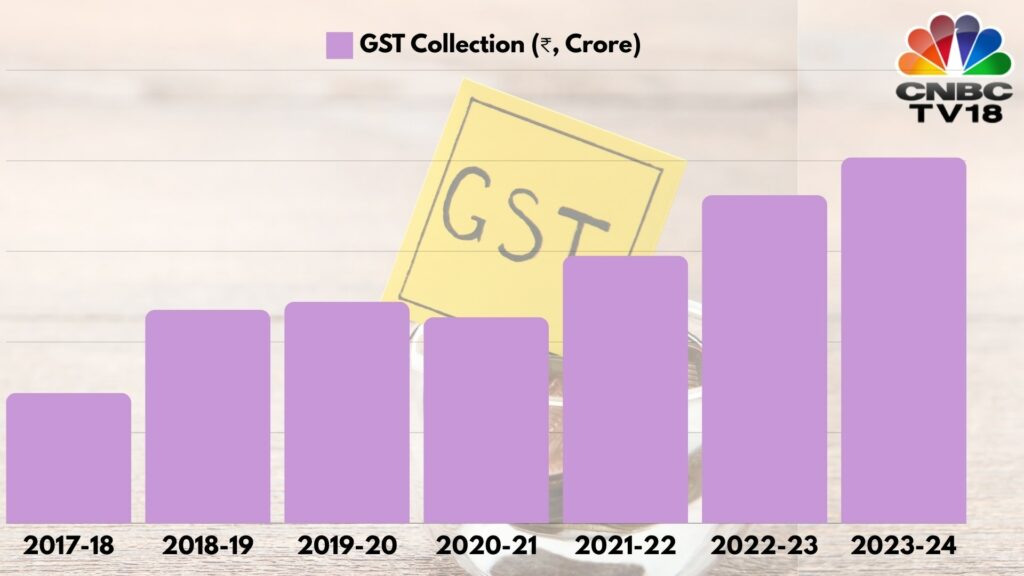Goods and Services Tax (GST) introduced on July 1, 2017, was a 360-degree tax reform that transformed India’s taxation landscape from a regime which had multiple taxes to a single indirect tax structure which subsumed these multiple taxes and removed the cascading effect.
As GST completes its seven years of initiation, we can proudly say that introduction of GST ushered in an era of transparency and technology wherein the robust checks and balances made tax avoidance a trying exercise. The biggest gift of this tax regime has been the GST Council, a paragon of centre-state relationship in a federal economy, which has been working on the principles of cooperative federalism through harmonised deliberations, to take difficult decisions consensually, on all matters pertaining to GST.
Unveiling the Key Drivers
In this digital era, this tech-enabled tax regime has embraced automation to overcome the challenges associated with human intervention as well as provide the right platform for many new businesses to thrive. The success of GST is attributable to two things — one being the robust functioning of GSTN which has not only streamlined registrations, tax payment, compliances, but has played a major role in combating tax-evasion by providing the executive with data that help them identify red flags.
The second being the technical committees (Law committee and Fitment Committee) and various Groups of Ministers (GoMs) formed by the GST council who play a crucial role by scrutinising the industry’s requests and provide the necessary solutions by way of amendment and clarifications.
In the past 7 years, the council has encompassed a wide array of initiatives, including rationalisation of GST rates and exemptions on various goods and services, providing sectoral clarifications to make the intent of law clearer, and regularising the past period on ‘as-is-where-is-basis’ to avoid any future litigation.
Some of the key recommendations that have been a game changer for the industry includes taxability of supplies between distinct/ related person wherein a NIL valuation has also been accepted as open market value in case recipient is eligible for full input tax credit ( ITC), circular on intermediary, liquidated damages, refund procedure, availment of ITC etc.
The last council also brought relief for many taxpayers, especially MSMEs by announcing the amnesty scheme to waive off interest and penalty for disputes under Section 73 of CGST Act., arising up to FY 19-20 (with tax paid by March 2025) as well as extending the timelines of availing ITC for FY 2020-21.
Further, the proposed mechanism to address past errors stemming from established industry practise by insertion of Section 11A is a very welcome move by the Govt to mitigate huge litigations in future. These decisions help the taxpayers in managing their working capital as well as avoid unnecessary litigation on valuation and ITC availment in future and is a major enabler in ensuring ease of doing business.
What next?
As India work towards its transformational objectives of ‘Viksit Bharat’ envisioned for 2047, it is time to take stock of what further needs to be done to ensure that GST becomes an efficient tax which it was purported to be. The need of the hour is to look at the tax base to not only bring in all commodities i.e. petroleum products, electricity, land and alcohol within the realm of GST but also look at the large number of exemptions to minimise cascading.
This will help in rate rationalisation in terms of moving to a lesser number rate of taxes for goods and services to avoid litigations. A number of patch work rates were imposed in the past where credits were restricted to keep the tax rate low. Those tax rates effectively result in cascading and need to be looked at.
The entire credit mechanism needs a re-examination as with buoyancy in tax collections, some hard decisions can be taken, The restrictions imposed in ITC of valid business expenses, specially Section 17(5) of CGST Act which restricts credits and some of the compliance mechanisms for availing credit need to go, thus allowing free flow of ITC as long as the input/input service is used for furtherance of business.
The time has come to look at centre-state cooperation at all levels to provide ease of doing business by reducing the multiplicity of audits, scrutiny and investigations being carried out on large corporates across the country, by setting up centralised or joint or coordinated Audits. Finally, It is time, however, of creating a permanent secretariat which can provide the much needed research and analysis on an ongoing basis to provide the structural changes and sectoral alignments on issues like inverted duties, interpretational inconsistencies, and procedural problems on a proactive basis.
GST Council’s pro-assessee approach and GSTN’s digitised platform shows government’s commitment towards ensuring ease of doing business and this needs to continue and keep GST as ‘Good and Simple Tax’. It is time to develop a vision for the future of GST and for the government(s) to press the accelerator and provide the much-needed impetus to the business to grow to achieve the objective of becoming a US $30-35 trillion economy by 2047.
—The authors; Bipin Sapra and Swati Saraf Pahuja, are Tax Partner and Senior Tax Professional respectively at EY India. The views expressed are their personal.
>>> Read full article>>>
Copyright for syndicated content belongs to the linked Source : CNBCTV18 – https://www.cnbctv18.com/business/finance/gst-day-review-of-seven-years-of-gst-changing-pace-bipin-sapra-19436075.htm
